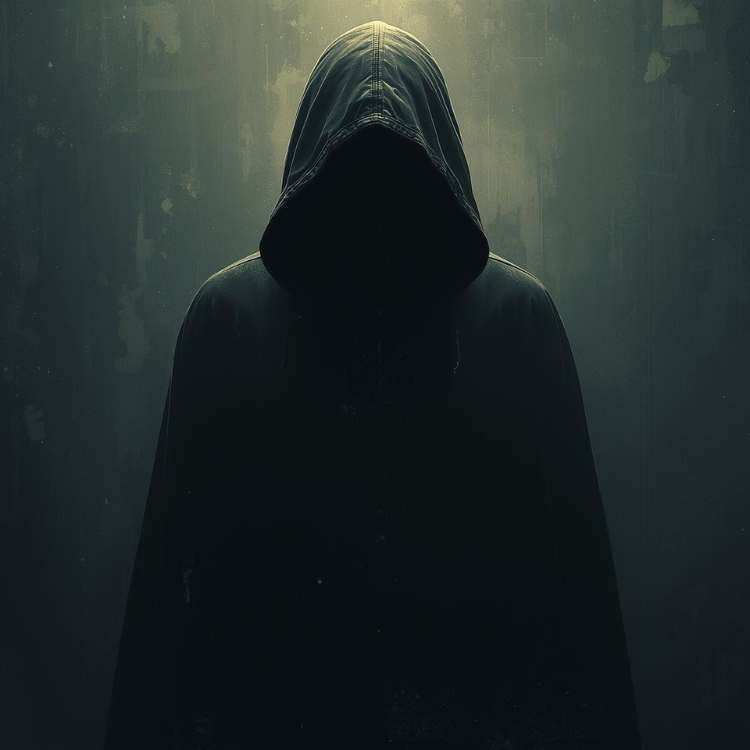
The Shadow That Haunted California
Few criminal mysteries have captivated the public imagination like that of the Zodiac Killer. Between 1968 and 1969, a series of brutal murders terrorized Northern California. What made the case unforgettable was not only the violence of the crimes, but the killer’s taunting letters, cryptic codes, and mocking tone toward the police and the media.
Half a century later, the Zodiac’s identity remains unknown. Despite countless theories, films, and investigations, the man behind the coded messages continues to be one of the most elusive figures in American criminal history.
This article explores the real story behind the legend — separating verifiable facts from speculation, and analyzing why this case still fascinates both criminologists and the public today.
California in the Late 1960s: The Perfect Setting for Fear
The Zodiac story begins against the backdrop of social change and cultural turmoil. The 1960s in the United States were marked by the Vietnam War, civil rights protests, and a growing distrust of authority.
California, especially the San Francisco Bay Area, symbolized freedom, creativity, and the counterculture — but it was also becoming a stage for some of the decade’s darkest crimes.
The Zodiac Killer emerged at the same time as other notorious figures such as Charles Manson, amplifying public fear that evil could hide behind any face.
What distinguished the Zodiac was his desire for attention. Unlike most killers, he didn’t just commit his crimes — he wanted the world to know.
The First Murders: Lake Herman Road and Blue Rock Springs
The Zodiac’s confirmed crimes began in December 1968.
- December 20, 1968 – Lake Herman Road, Benicia:
Teenagers Betty Lou Jensen and David Faraday were shot and killed while parked in a secluded area. There were no witnesses and no clear motive. - July 4, 1969 – Blue Rock Springs Park, Vallejo:
A man approached a parked car and opened fire, killing Darlene Ferrin and seriously injuring Michael Mageau. Mageau survived and later described the shooter as a man in his 30s or 40s, stocky, with short brown hair — the first physical description of the Zodiac.
Within days, the killer began sending letters to local newspapers, claiming responsibility for both shootings.
The Letters That Shook the Press ✉️
In August 1969, three nearly identical letters arrived at the San Francisco Chronicle, San Francisco Examiner, and Vallejo Times-Herald. Each one began with chilling words:
“This is the Zodiac speaking.”
Attached to the letters was a cipher — a coded message — that he demanded be printed on the front pages of the newspapers, or else he would “cruise around all weekend killing lone people in the night.”
The 408-symbol cipher was soon solved by a schoolteacher and his wife, revealing a disturbing message in which the killer expressed pleasure in killing and hinted at collecting “slaves” for the afterlife.
However, crucially, the message did not reveal his identity — leaving the public and the police both terrified and intrigued.
The Zodiac Escalates: Stabbings and More Letters
The next confirmed attack occurred on September 27, 1969, at Lake Berryessa, near Napa.
Two college students, Bryan Hartnell and Cecelia Shepard, were picnicking by the lake when a man wearing a black hood marked with a white crosshair symbol approached them. He claimed to be an escaped convict and tied them up before stabbing them multiple times.
Hartnell survived; Shepard did not. Before leaving, the killer drew his now-famous Zodiac symbol — a cross within a circle — on the victims’ car, along with the dates of his previous crimes.
Just two weeks later, on October 11, 1969, cab driver Paul Stine was shot in San Francisco’s upscale Presidio Heights. Police initially thought it was a robbery — until the Zodiac sent Stine’s blood-stained shirt to the Chronicle as proof of his involvement.
The Zodiac was not only killing — he was playing a psychological game, proving that he could strike anywhere and mock the police without fear.
The Ciphers and Symbols: The Language of a Killer
One of the Zodiac’s defining traits was his use of cryptography — coded messages that combined symbols, numbers, and letters.
The first cipher, the “Z-408,” was solved quickly. But his later codes — especially the Z-340, sent in November 1969 — remained unsolved for decades.
In December 2020, a team of codebreakers finally cracked the Z-340 cipher, revealing a message that read, in part:
“I hope you are having lots of fun in trying to catch me... I am not afraid of the gas chamber because it will send me to paradise all the sooner.”
While the message offered no new clues about his identity, it confirmed that the Zodiac’s primary goal was to manipulate and terrify — to dominate the public’s attention through fear and mystery.
Suspects: The Endless Hunt for the Zodiac 🕵️
Over the decades, police and amateur sleuths have identified dozens of potential suspects.
The most famous include:
- Arthur Leigh Allen:
A convicted sex offender whose behavior, handwriting, and possession of Zodiac-like items made him the prime suspect. However, his fingerprints and DNA did not match those found on the letters. - Lawrence Kane:
A man with a criminal record and alleged mental illness, often mentioned due to his resemblance to police sketches. - Richard Gaikowski, Rick Marshall, and others:
Each linked by circumstantial evidence or speculation, but never confirmed.
In 2021, a private group called The Case Breakers claimed the killer was Gary Francis Poste, a deceased Air Force veteran, citing photos and forensic clues. Yet, official law enforcement agencies have not verified this claim.
Despite thousands of tips and new technologies, no suspect has ever been definitively proven to be the Zodiac.
The Psychology of the Zodiac: The Mind Behind the Mystery 🧠
From a criminological perspective, the Zodiac Killer fits several psychological profiles — yet defies simple categorization.
Experts describe him as:
- Organized yet impulsive: capable of planning his crimes and manipulating media attention, but also erratic.
- Narcissistic: obsessed with power and recognition.
- Sadistic: deriving pleasure from the public’s fear.
- Possibly sociopathic: lacking empathy but skilled at controlling his image.
Unlike most serial killers, the Zodiac seemed more focused on communication than killing. His letters — full of arrogance, wordplay, and symbols — show a man who wanted not only to murder, but to be remembered.
His taunts toward the police — including calling television shows and sending greeting cards — transformed him into a criminal celebrity, foreshadowing the “media killer” archetype seen in later decades.
The Media’s Role: Building a Legend 📺
Just as in the Boston Strangler case, the media played a crucial role in shaping the Zodiac’s mythology.
The San Francisco Chronicle and other papers regularly published his letters, allowing the killer to speak directly to millions of readers. Television and radio followed every development, and soon, “The Zodiac Killer” became a national obsession.
The more attention he received, the bolder he became. He even threatened to shoot schoolchildren from a school bus, creating widespread panic.
From a sociological point of view, the Zodiac case revealed how mass communication and fear could interact — turning a criminal into an enduring cultural icon.
The Aftermath: Cold Trails and Modern Forensics
By the early 1970s, the Zodiac’s letters slowed, then stopped altogether. Whether he died, was imprisoned under another name, or simply decided to stop communicating remains unknown.
Despite extensive police work — involving multiple jurisdictions and the FBI — the case gradually went cold.
In recent decades, advances in DNA analysis and digital forensics have revived interest. Partial DNA samples from envelopes have been tested, though none conclusively match any known suspect.
Today, the Zodiac case remains open in several counties, including San Francisco, Napa, and Vallejo — an enduring symbol of how even the most notorious criminals can vanish into the shadows.
The Zodiac’s Cultural Legacy: From Fear to Fascination 🎥
The Zodiac’s crimes inspired countless works of art, books, and films.
- 🎬 Zodiac (2007), directed by David Fincher, is widely regarded as one of the most accurate portrayals of the investigation — focusing on the journalists and detectives obsessed with finding the truth.
- 📖 True-crime books such as Zodiac (Robert Graysmith, 1986) and Most Dangerous Animal of All (2014) helped keep the story alive for new generations.
- 💀 The killer’s cryptic messages and strange symbols have become pop culture references — appearing in everything from tattoos to video games.
The Zodiac endures because his identity — unlike most other serial killers — was never discovered. He represents the ultimate mystery: a killer whose power came not from his crimes alone, but from his control over the narrative.
The Zodiac in Criminological Perspective: Why the Case Still Matters
For criminologists, the Zodiac remains a textbook example of how a serial killer’s interaction with the media, law enforcement, and the public can shape both investigation and myth.
Key lessons include:
- The psychology of fear: How crime stories can dominate public consciousness.
- The importance of forensic evolution: The Zodiac case highlights the limitations of 20th-century investigation methods.
- The danger of sensationalism: How excessive coverage can turn a criminal into a legend.
- The persistence of unsolved mysteries: Even in the age of advanced science, some truths remain beyond reach.
Ultimately, the Zodiac’s story shows that evil sometimes thrives in ambiguity — and that the unknown can be more terrifying than the known.
Conclusion: The Man Who Vanished Into His Own Legend
More than fifty years later, the Zodiac Killer still haunts America’s collective imagination. His crimes were horrific — but his genius for self-mythologizing turned him into something larger than life.
Whether he was a lone predator, a disturbed intellect, or a cunning manipulator, one thing is clear: the Zodiac succeeded where few criminals ever have — he became eternal through mystery.
Until his true identity is uncovered, his name will remain synonymous with unsolved evil, reminding us that behind every coded message, every shadowy figure, there lies the most unsettling question of all:
“Who was the Zodiac Killer?”
Sources
- Federal Bureau of Investigation Archives: The Zodiac Files
- San Francisco Police Department Cold Case Unit
- Graysmith, Robert. Zodiac (1986)
- Fincher, David. Zodiac (Film, 2007)
- The Case Breakers (2021 Investigation Summary)
- The Washington Post: “The 340 Cipher Finally Solved” (2020)
- CNN: “Zodiac Killer DNA Efforts Continue” (2023)

